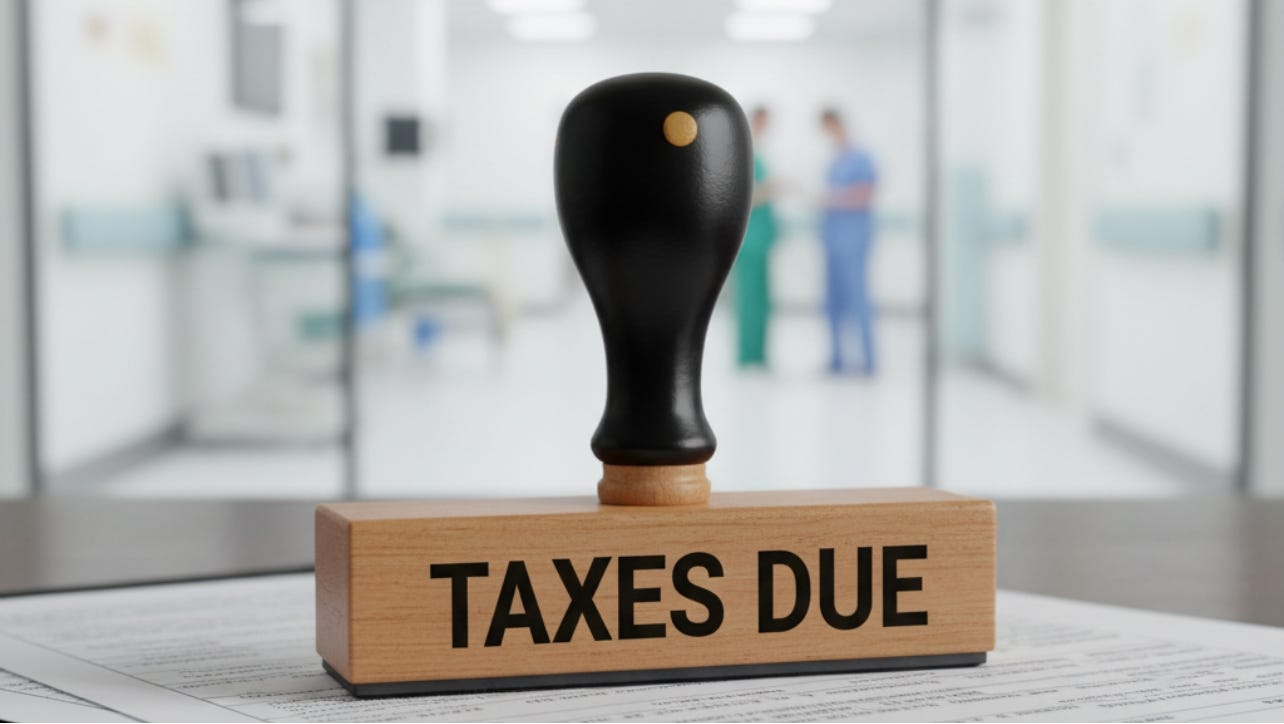The Nonprofit Paradox: Tax-Free Profits at the Expense of Communities
Why nonprofit hospitals should be taxed on their profits.
There are many commendable nonprofit organizations in the United States, but far too many misuse their “nonprofit” designation. Large hospital systems often top that list, benefiting from a status they don’t deserve, and one that may in fact be harmful.
Profit in a nonprofit world
Many of America’s nonprofit hospitals operate with stunning profitability. Some report profit margins exceeding 20%, while most for-profit businesses would envy such returns. As a group, nonprofit hospitals collectively earn tens of billions of dollars a year on investment portfolios alone. Their excuse for not paying taxes? That taxes would erode their ability to serve their communities. That’s circular logic at best and a bold-faced lie at worst.
Where the money goes
Roughly 3,900 U.S. hospitals carry the nonprofit label, yet many rake in substantial profits. If they were genuinely focused on community benefit, their profit margins would be far lower. It begs the question: where are those profits going? The answer often lies in bloated executive compensation, investment portfolios, and massive reserve funds—not patient care.
Meanwhile, hospitals in smaller towns often reap no profit and find nonprofit status burdensome. Their designation adds paperwork, compliance tasks, and legal assessments that rarely benefit the community.
Accountability vacuum
Local governments, when faced with surpluses, face voter pressure to reinvest or refund. Not so with nonprofit hospitals. Their boards operate independently. There are no shareholders. No elections. No real accountability.
Redefining the social contract
If communities are de facto shareholders in nonprofits, they deserve transparency, reinvestment, and price fairness. If hospitals fail to deliver, taxing their excessive profits becomes necessary.
A progressive tax scheme offers an elegant solution. For example:
Less than 3% profit, no taxes
3% to 6%, pay the same corporate tax as a for-profit hospital
6% to 15%, pay a 50% tax
Over 15%, pay a 90% tax.
This model would discourage excess hoarding and encourage reinvestment. Profitable companies pay dividends to shareholders. They don’t just sit on money forever. Why should nonprofit hospitals? And, the approach aligns with the core principle of nonprofit status which is to provide public value.
Final thought
Nonprofit hospitals don’t have to lose their profits to taxes. They can choose to reinvest in their communities, their patients, and the public good. That’s the real social bargain. Any for-profit business either figures out how to return value to shareholders by reinvesting in the business or paying dividends. Their cash hoards are not allowed to grow without bounds. Nonprofits should be no different. In fact, they should be held to a higher standard.



